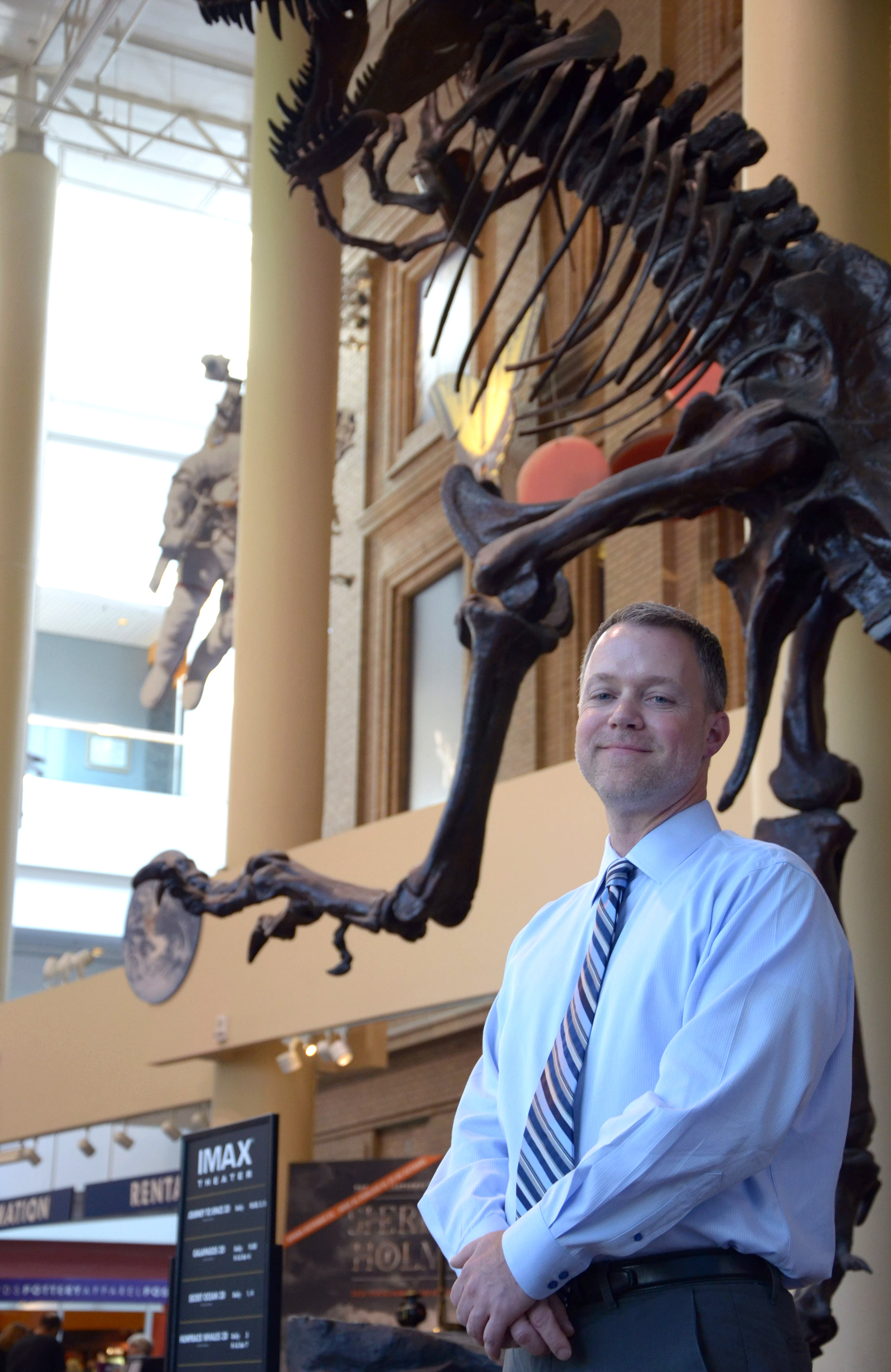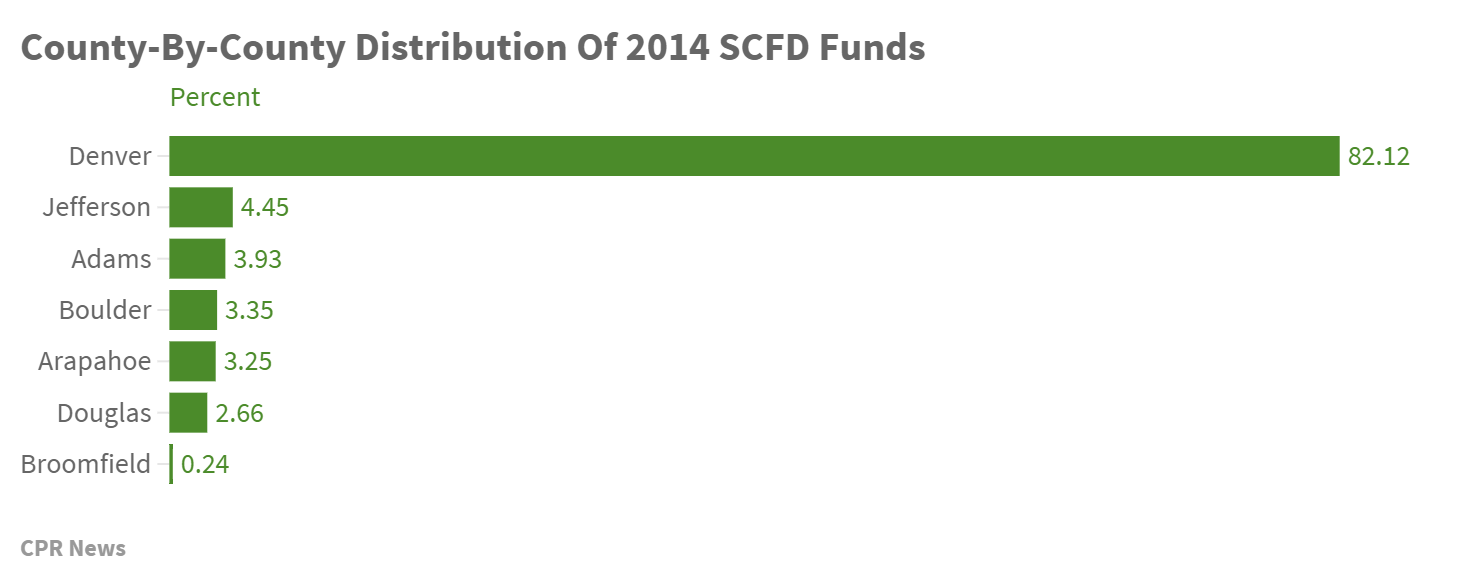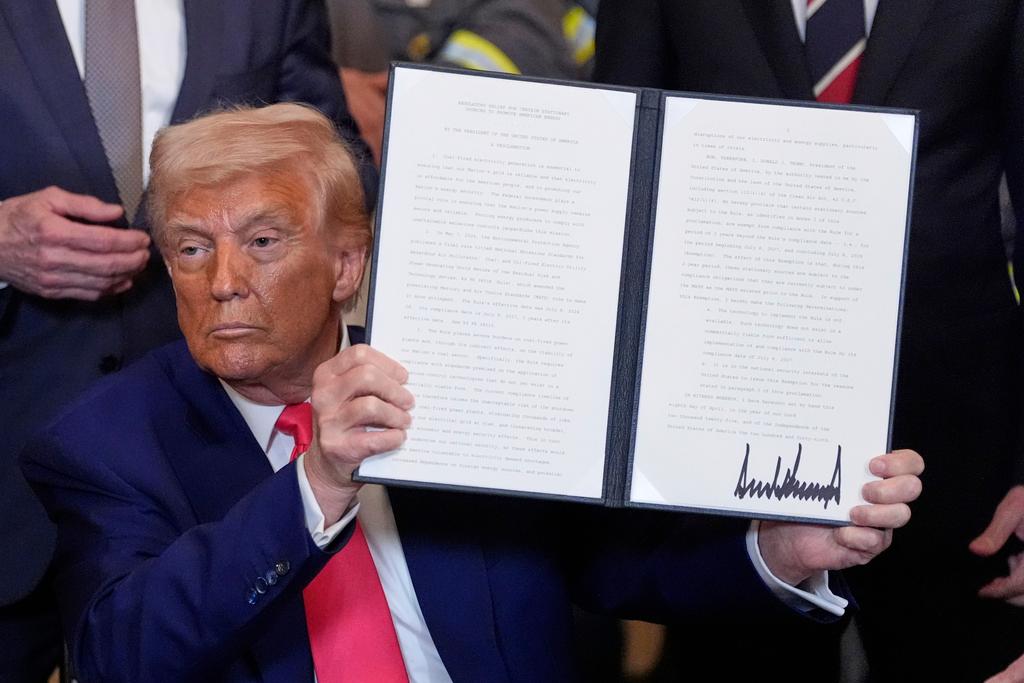
Update: The SCFD board of directors on Thursday unanimously agreed to move forward on the plan it adopted in May without making changes.
Original story continues below:
There's a tug-of-war happening in the greater Denver area's culture scene over how millions of dollars in tax money should get divvied up among hundreds of organizations.
The funding comes from the Scientific and Cultural Facilities District (SCFD). Last year, the district gave $52 million to about 270 organizations in seven counties across Denver metro and the Boulder area.
This money helps support organizations ranging from big ones like the Denver Zoo to small ones like the Lakewood Arts Council. But officials plan to change how the money gets distributed before they ask voters to renew the tax again next year. Voters have approved previous extensions of the tax in 1994 and in 2004.
During a public meeting Thursday, the SCFD board will hear proposals on alternative funding models. Here are some questions and answers about the SCFD:
How Does SCFD Work?
It's a process that dates back a few decades, when times were tough for Denver's biggest cultural institutions. They'd lost $2 million in subsidies and had to raise admission prices.

Last year, SCFD gave the Denver Museum of Nature and Science (DMNS) more than $8 million. Part of that money helps to cover the cost of free days and other reduced-priced programs, the museum's vice president of business operations Ed Scholz said.
"People have the perception, because we're big, that somehow we’re rich," Scholz said. "I’m not complaining, we’re not in trouble. But back then it wasn’t that we were going to go under, it was about access. Today, it’s the same thing."
How Is The Funding Split?
Three tiers, largely based on income, divide organizations. The five biggest organizations are on top and get the most money: 64 percent. That includes DMNS, the Denver Art Museum, the Denver Zoo, Denver Botanic Gardens and the Denver Center for the Performing Arts.
The second tier has 28 mid-sized organizations, like the Colorado Symphony, the Boulder Ballet and the Arvada Center.
And the rest -- about 240 -- make up the third tier. Those are small organizations, like theater groups and choirs. This group is the largest, and it splits the smallest amount of money: 14 percent.
So Smaller Organizations Want More Money?
Yes, but some don't agree on how much. And lawmakers have to agree on changes during the legislative session next spring so the tax could go before voters in 2016. Right now, SCFD is set to end in 2018. But the board hopes to get it reauthorized next year when more voters turn out for the presidential election.
And according to the latest campaign finance report that's out this week, a political committee called Citizens for Arts to Zoo that's advocating for reauthorization has nearly $500,000 in contributions.
What Will Happen At Thursday's Public Meeting?
A number of people and groups will present their own ideas on how to split SCFD funds.
Some, like Stella Yu, say the big institutions are much stabler than they were when SCFD started back in the 1980s.
"They have beautiful facilities and a lot of support, so now is the time to redirect the money to where it’s needed," Yu, who directs a small Denver program called Arts Street, said.
Arts Street got $18,000 from SCFD last year. Yu said with more SCFD funds, she could expand her staff, which now has three full-time employees.
There's also concern that the number of small- and mid-sized organizations will grow, leaving each with less money from the pool. The first tier is locked in at five organizations by statute.
"It’s time to evaluate and see how can we make it so (SCFD) would really develop a cultural community that fits the next 12 to 15 years," Yu said.
And What Does SCFD Say About That?
The SCFD board says it's very calculated about growth. There are also changes likely coming for what new groups are eligible for funds in the future. The board adopted a modification that says to qualify for the second tier, non-profits would have to exist for seven years instead of five, which is the case now. And to qualify for the third tier, small organizations would need five years of operation instead of three. The board says that would help control the growth of those SCFD tiers.
What Are Other Arguments For Why Funding Should Change?
One is that small organizations within the SCFD deserve more funding because they now draw about a third of the attendance.
But SCFD board chair Dan Hopkins said there are other factors to consider, like the greater reach of and the tourism attracted by the "flagship" organizations.
"These iconic institutions have expensive collections to maintain, they have expenses like feeding thousands of animals, and you can’t just base the formula on attendance alone," Hopkins said.
Other people look at the map and say Denver gets too much. For example, Boulder contributed 9.5 percent of the tax money last year but got 3.35 percent of the SCFD funds.

SCFD says that it doesn't calculate the county-by-county distribution, and instead considers the district as a whole. The organization also notes that organizations may be based in one county but do programming in lots of counties or draw residents from many counties.
How Have Different Groups Responded To The Ways SCFD Funding Might Change?
There is a plan that the SCFD board already signed off on earlier this year. The four-year process included gathering a lot of community input that was later considered by a task force, which then recommended changes to the board.
In it, the big organizations did agree to cut some funding. And some of them are now asking their supporters to sign a petition to back this plan.
But certain smaller groups feel like their voices weren't heard. So they'll bring other proposals to the table. The SCFD board said it can't predict if it will implement any changes based on the proposals. And ultimately it ends up in the hands of lawmakers and then voters.
- See an alternative SCFD funding proposal known as FACE2016
- See an alternative SCFD funding proposal by Anthony Radich of WESTAF
CPR's digital producer Megan Arellano contributed to this report.









